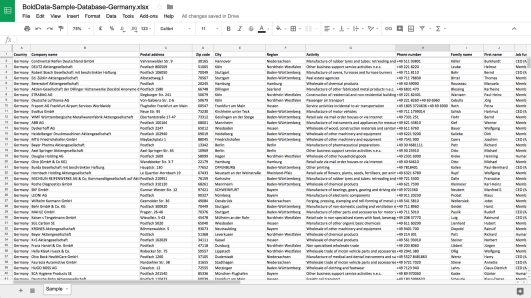As technology evolves and becomes more complex, efficient and organized data management becomes increasingly important. That’s where databases come in. A database is an organized collection of data, usually stored and accessed electronically. It is designed to efficiently store, retrieve, and manage large amounts of information.
Types of Databases
There are several types of databases, each designed for a specific purpose. Here are some of the most common types:
- Relational Databases: This is the most common type of database, where data is organized into tables consisting of rows and columns. The tables are related to each other through a common field or key, allowing for easy retrieval and manipulation of data.
- Object-Oriented Databases: This database is designed to store and manage object-oriented data, such as images and videos. It uses object-oriented programming concepts to store and access data.
- NoSQL Databases: This is a non-relational database that is designed to handle large amounts of unstructured data. It does not rely on a fixed schema and can easily scale horizontally.
- Cloud Databases: Cloud databases are designed to run on cloud computing platforms, allowing for easy access and management of data from anywhere in the world.
Components of a Database
A database comprises several components that work together to ensure efficient data management. These components include:
- Tables: Tables are used to store data in a relational database. They consist of rows and columns, each representing a specific data field.
- Fields: Fields are the smallest unit of data in a database. Each field represents a specific piece of information, such as a name, date, or price.
- Records: A record is a complete set of data that includes all the fields in a table. It represents a single instance of the data being stored.
- Queries: Queries are used to retrieve data from a database. They allow users to search for specific data based on a set of criteria.
- Forms: Forms are used to input and display data in a user-friendly format. They are often used to simplify data entry and make it more intuitive for users.
- Reports: Reports are used to summarize and present data in a useful format, such as a chart or graph. They are often used to provide insights into business performance.
Importance of Databases
Databases are essential for efficient data management in organizations of all sizes. They provide a centralized location for storing and managing data, ensuring that information is accurate, up-to-date, and easily accessible. Further, databases improve data security by providing access controls and allowing for data backup and recovery in case of a disaster.
Databases are also essential for decision-making processes, providing valuable insights into business performance and customer behavior. They allow organizations to identify trends and patterns in data, which can be used to inform strategic decisions and improve operational efficiency.
Get Your Database from BoldData
In conclusion, a database is an organized collection of data, designed to efficiently store, retrieve, and manage large amounts of information. There are several types of databases, each designed for a specific purpose. The components of a database include tables, fields, records, queries, forms, and reports. Databases are essential for efficient data management, decision-making, and ensuring data security.
If you want to have access to company database all over the world, contact us at BoldData!

